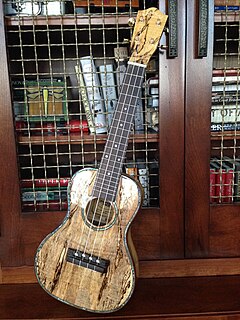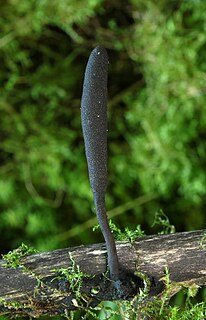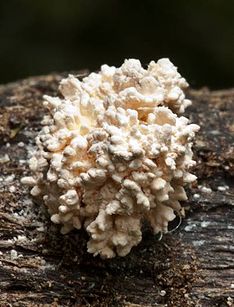
Traditionally, the bird order Apodiformes contained three living families: the swifts (Apodidae), the treeswifts (Hemiprocnidae), and the hummingbirds (Trochilidae). In the Sibley-Ahlquist taxonomy, this order is raised to a superorder Apodimorphae in which hummingbirds are separated as a new order, Trochiliformes. With nearly 450 species identified to date, they are the most diverse order of birds after the passerines.
An ascocarp, or ascoma, is the fruiting body (sporocarp) of an ascomycete phylum fungus. It consists of very tightly interwoven hyphae and may contain millions of asci, each of which typically contains four to eight ascospores. Ascocarps are most commonly bowl-shaped (apothecia) but may take on a spherical or flask-like form that has a pore opening to release spores (perithecia) or no opening (cleistothecia).

The Plasmodiidae are a family of apicomplexan parasites, including the type genus Plasmodium, which is responsible for malaria. This family was erected in 1903 by Mesnil and is one of the four families in the order Haemospororida.

The Haemosporida are an order of intraerythrocytic parasitic alveolates.

The Xylariaceae are a family of mostly small ascomycetous fungi. It is one of the most commonly encountered groups of ascomycetes and is found throughout the temperate and tropical regions of the world. They are typically found on wood, seeds, fruits, or plant leaves, some even associated with insect nests. Most decay wood and many are plant pathogens.

Xylaria is a genus of ascomycetous fungi commonly found growing on dead wood. The name comes from the Greek xýlon meaning wood.

Xylaria mali is a plant pathogen that causes black rot on apple.

Xylaria polymorpha, commonly known as dead man's fingers, as indeed it is in Act IV Scene 7 of Hamlet, is a saprobic fungus. It is a common inhabitant of forest and woodland areas, usually growing from the bases of rotting or injured tree stumps and decaying wood. It has also been known to colonize substrates like woody legume pods, petioles, and herbaceous stems. It is characterized by its elongated upright, clavate, or strap-like stromata poking up through the ground, much like fingers. The genus Xylaria contains about 100 species of cosmopolitan fungi. Polymorpha means "many forms". As its name suggests, it has a very variable but often club-shaped fruiting body (stroma) resembling burned wood.

Spalting is any form of wood coloration caused by fungi. Although primarily found in dead trees, spalting can also occur in living trees under stress. Although spalting can cause weight loss and strength loss in the wood, the unique coloration and patterns of spalted wood are sought by woodworkers.
Dead man's fingers may refer to:

Xylaria hypoxylon is a species of fungus in the genus Xylaria. It is known by a variety of common names, such as the candlestick fungus, the candlesnuff fungus, carbon antlers, or the stag's horn fungus. The fruit bodies, characterized by erect, elongated black branches with whitened tips, typically grow in clusters on decaying hardwood. The fungus can cause a root rot in hawthorn and gooseberry plants.

Curtis Gates Lloyd was an American mycologist known for both his research on the gasteroid and polypore fungi, as well as his controversial views on naming conventions in taxonomy. He had a herbarium with about 60,000 fungal specimens, and described over a thousand new species of fungi. Along with his two brothers John Uri Lloyd and Nelson Ashley Lloyd, he founded the Lloyd Library and Museum in Cincinnati.

Tremella is a genus of fungi in the family Tremellaceae. All Tremella species are parasites of other fungi and most produce anamorphic yeast states. Basidiocarps, when produced, are gelatinous and are colloquially classed among the "jelly fungi". Over 100 species of Tremella are currently recognized worldwide. Two species, Tremella fuciformis and Tremella aurantialba, are commercially cultivated for food.
Andrew Price Morgan was an American botanist. He investigated the flora of the Miami Valley in Ohio. While his interest included flowering plants, as noted by his Flora of the Miami Valley, Ohio, his special interest was in fungi. Morgan worked as a teacher in Dayton. He studied the botany of the Great Miami River, publishing in 1878 the Flora of the Miami River, Ohio; Morgan also showed particular interest in mycology and bryology. A.P. Morgan was a mentor to the prominent American mycologist Curtis Gates Lloyd. His correspondence with Lloyd is stored in the Lloyd Library and Museum in Cincinnati.
Glaziellaceae is a family of fungi in the order Pezizales that contains the single monotypic genus Glaziella. The type species Glaziella vesiculosa, originally collected in Cuba, was referred to the genus Xylaria by Miles Joseph Berkeley and Moses Ashley Curtis in 1869. A decade later, Berkeley circumscribed the genus Glaziella to contain a specimen collected in Brazil, apparently forgetting that he had earlier named it Xylaria aurantiaca.

Xylaria longipes, commonly known as dead moll's fingers, is a species of fungus in the family Xylariaceae.
Odontotermes redemanni, is a species of termite of the genus Odontotermes. It is native to India and Sri Lanka. It damages wooden constructions. It is a pest of sugarcane, tea and coconut. They construct termitaria during November to March when rainfall and ambient temperature become low. Underground termite nests of this species are a natural host for the important Traditional Chinese Medicine fungus Xylaria nigripes, also known as Wu Ling Shen.
Polydolopimorphia is an extinct order of metatherians, more closely related to extant marsupials than other extinct mammals. Known from the Paleocene-Pliocene of South America and the Eocene of Antarctica, they were a diverse group during the Paleogene, filling many niches, before declining and becoming extinct at the end of the Neogene. It is divided into two suborders, Bonapartheriiformes, and Polydolopiformes











